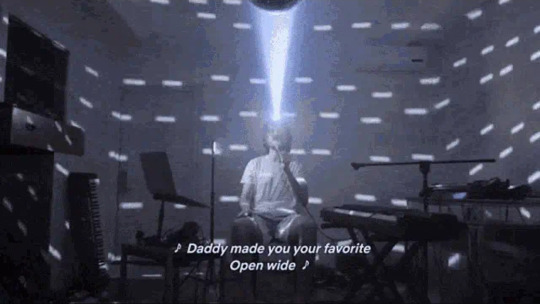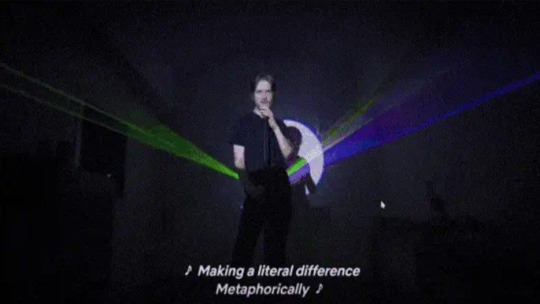#mbtimyths
Text
MBTI as songs from Bo Burnham “Inside”
ESFJ – Content

ENFJ – Comedy

ISFJ – Facetime With My Mom

INTJ – How the World Works

ISFP – White Woman's Instagram

ISTJ – Unpaid Intern

ENTJ – Bezos I

ESTP – Sexting

INTP – Look Who's Inside Again

ENTP – Problematic

ISTP – 30

INFP – Shit

ENFP – Welcome to the Internet

ESTJ – Bezos II

INFJ – That Funny Feeling

ESFP – All Eyes On Me

#mbti#mbti as#all types#bo burham inside#bo burnham#mbti shitpost#myers briggs#mbtimyths#16 personality types#16 personalities#myersbriggs#inside bo burnham
7 notes
·
View notes
Text
Favorite Character Typings
Typings are Nike’s opinion!
ESTP

ESTJ

ESFP

ESFJ

ENTP

ENTJ

ENFP

ENFJ

ISTP

ISTJ

ISFP

ISFJ

INTP

INTJ

INFP

INFJ

#mbti#16 personality types#all types#myers briggs#myers-briggs#schitts creek#adventure time#umbrella academy#studio ghibli#Harry Potter#atla#nike#mbtimyths
15 notes
·
View notes
Text
MBTI as Problematic Queer Tropes
(s/o to troublingduck for the quiz that inspired this!)
ISTJ: Closet Gay. The queer least likely to go against the grain (but when they do,, they go ham.)
ESTJ: Gay Conservative. The only queer that has their shit together enough to become affluent tbh.
ESFJ: Mentor in Queerness. Every baby queer’s Fairy Gaymother.
ISFJ: Late Coming Out. They took time to focus on themself and discover their truth, at last!
ESTP: Anything That Moves. Not always down, but never not down (; (Expert in positive informed consent, hell yeah.)
ISTP: Everybody Wants the Hermaphrodite. Effortless sex appeal in every gender presentation.
ESFP: Agent Peacock. Badass AND stylish, independent of gender.
ISFP: Camp Gay. The iconic queer that you don’t need gaydar to detect.
ENFJ: Have I Mentioned I Am Gay? They’re an open book that’s begging to be read!
INFJ: Magical Queer. Maybe they’re born with insight and wisdom. Maybe they learned it in therapy.
ENFP: Closet Key. More than happy to facilitate a queer awakening; they’d love to explore the possibilities with you.
INFP: Gayngst. Most prone to queer yearning– and queer wrath.
ENTJ: Pragmatic Pansexuality. Gay Agenda in their head, Pan Plan for their bed. Visionary.
INTJ: Straight Gay. They have no fucks to give about visibility (and invisibility.)
ENTP: Flaming Devil. Called devil’s advocate for a reason. Raw sinner and a damn sexy bitch.
INTP: Transparent Closet. They’re a library of knowledge... the self-knowledge section is usually checked out.
24 notes
·
View notes
Note
What are the ship dynamics of ISTP-INFP relationship??
Each the reverse of the other's shadow, ISTPs and INFPs are the least alike you can get. In the expanded theory of Myers-Briggs, this pairing is known as “Enigma”, and in Socionics, it’s denominated “Super-ego”.
This pairing will generally be characterized by differing values, discomfort, and mutual misunderstanding. Partners in these relationships are often fascinated or terrified by their partners lack of similarity to themselves, and they are constantly aware of their total opposition in values to the partner; people close to the pair are often similarly aware. (a)
When presented with the same scenario, Enigma pairs follow parallel lines of reasoning in reverse order. A good metaphor for this is one person interpreting a glass as half full while the other interprets it as half empty; Enigma pairs will arrive at the same conclusion with opposite interpretations. For ISTPs and INFPs, this will likely result in an agreement to disagree and an avoidance of meaningful confrontation until boundaries are crossed. However, this can develop into a relaxed relation in which the ISTP and INFP do not expect their comfort zones to be pushed. They may see their relationship as a playful and exotic reprieve or a safe and casual familiarity.
ISTPs and INFPs are simpatico in their pursuit of internal compatibility and may perceive this in a “game recognize game” sense. While the ISTPs seek comprehension, INFPs strive for conviction. The INFP will admire the ISTP’s logical lucidity, and the ISTP will regard the INFP’s integrity as meritable.
As a couple the ISTP and INFP will augment each other’s antics, the INFP offering insight through imagination and the ISTP contributing know-how to make dreams a reality. Expect shenanigans, and not just run-of-the-mill shenanigans: out-of-the-box shenanigans with impressive execution. As two developed individuals, the ISTP will help the INFP navigate the world with accuracy, and the INFP will help the ISTP decide what they stand for. They will respect and uphold each other’s headspace, privacy, and individuality.
However, as two undeveloped individuals, the relationship is unlikely to move past superficial– they likely won’t even bat an eye at each other. If they do take a mutual interest, antagonism may escalate into psychological abuse from the ISTP and emotional abuse from the INFP. The ISTP will bully the INFP for perceived incompetence, and the INFP will guilt trip the ISTP without restraint.
To avoid these pitfalls, to be blunt, both need to suck it up and go to therapy. ISTP will do well in CBT-style therapy and INFP will thrive with DBT-style.
Thanks for the request, feel free to send more asks in the future!
(a) https://en.wikipedia.org/wiki/Socionics
**EDIT: I found out that Tipoplo (ISTP) has now been dating an INFP for a year! So while unusual, it's not impossible to make work :)
133 notes
·
View notes
Note
Hi, I am trying to mix game theory with relationship in MBTI. And I had to quantify the best type of relationship in the MBTI and for that iI used the intertype relation in socionics. The problem is that I need to find a way to explain why I classify some relation higher than some others and also justify why some of them will have a higher score than the others in my game. For example a Dual relationship have a score close to 1 (high) and conflict will be close to 0 (low).
This is awesome! I’m going to start by listing the rankings as assigned by sociotype.com, then I’ll explain the reasoning I deduced beneath the cut.
The compatibility of intertype relations, from greatest to least, is as follows:
Duality
Identity
Activation
Mirror
Mirage
Semi-duality
Congenerity
Cooperation
Recruit
Supervisor
Recruiter
Supervisee
Super-ego
Extinguishment
Quasi-identity
Conflict
So I went to https://sociotype.com/tools/ and used the intertype relationship calculator to get a gist of how they rank the relationships. (I'll translate the Socionics lingo to MBTI in the parentheses.) I'll also use this graphic to illustrate Model A through Jung's archetypes:

I found that they score types that value the same functions (dominant through inferior) the highest– let’s call this the “soulmate” group. Second highest are the types that share only two valued functions AND two independent/dependent functions (think of dominant/inferior and auxiliary/tertiary as “sets”, represented by the heads vs hands above: hands do what heads signal)– call this the “peer” group. Third are the types that ONLY share two valued functions– call this “transactional” group. Lowest are the types that do not share any valued functions– call this “opposite” group. Each group has sub-criteria to determine ranking within that group.
In the soulmate group, functions in the same sets rank above functions in opposite sets; then, functions in opposite positions rank above functions in the same position.
In the peer group, shared functions in opposite positions rank highest; then, as the tiebreaker, I ranked the relationships with mirrored (Ni/Ne, etc.) leading (dom) functions higher.
In the transactional group, the subject ranks relationships differently than their partner. Relationships in which the subject’s creative (aux) function is matched or mirrored by the partner’s leading (dom) function are ranked highest; then, relationships in which the subject’s leading (dom) function is complemented (Ni/Se, etc.) or mirrored by the partner’s creative (aux) function rank higher.
In the opposite group, functions in the same sets rank highest; then, leading (dom) functions of the same orientation (i or e) rank higher.
So... what the hell does this ACTUALLY mean in MBTI terms, you ask? Let’s break it down type by type (using INFJ as example subject)
Duality: same values, same sets, opposite order; balanced strengths and weaknesses with aligned priorities (dom Ni complements dom Se, aux Fe complements aux Ti)
Identity: same values, same sets, same order; aligned priorities but unbalanced (total match, no complements)
Activation: same values, opposite sets, opposite order; balanced but priorities are misaligned (dom Ni complements aux Se, aux Fe complements dom Ti)
Mirror: same values, opposite sets, same order; misaligned priorities and unbalanced (dom Ni matches aux Ni, aux Fe matches dom Fe)
Mirage: half same values, same dependent set in opposite order; similar perspectives with balanced strengths and weaknesses (dom Ni mirrors dom Ne, aux Fe complements aux Ti)
Semi-duality: half same values, same independent set in opposite order; balanced but perspectives dissimilar (dom Ni complements dom Se)
Congenerity: half same values, same independent set in same order; unbalanced but perspectives similar (dom Ni matches dom Ni)
Cooperation: half same values, same dependent set in same order; unbalanced and perspectives dissimilar (aux Fe matches aux Fe)
Recruit: half same values, subject’s aux function mirrored by partner’s dom, dom function complemented by aux; subject’s critical function is triggered (aux Fe mirrors dom Fi, dom Ni complements aux Se, crit Fi triggered by dom Fi)
Supervisor: half same values, subject’s aux function matched; partner’s trickster function is triggered (aux Fe matches dom Fe, dom Ni triggers trix Ni)
Recruiter: half same values, subject’s dom function mirrored; partner’s critical function is triggered (dom Ni mirrors aux Ne, dom Ni triggers crit Ni)
Supervisee: half same values, subject’s dom function matched; subject’s trickster function is triggered (dom Ni mirrors aux Ni, trix Te triggered by dom Te)
Super-ego: opposite values, same sets, same orientation; two sides of the same coin (introverted doms, backwards opposites)
Extinguishment: opposite values, same sets, opposite orientation: same side of matching coins (mirror opposites)
Quasi-identity: opposite values, opposite sets, same orientation: two sides of matching coins (introverted doms, inside-out mirror)
Conflict: opposite values, opposite sets, opposite orientations: foreign currencies (inside-out and backwards mirror)
This was the hardest ask I’ve received in years, and I learned a lot while finding an answer! Thanks for the ask anon, and please send us documentation of your game. I’d love to share the finished product!
P.S. A reminder to my general followers: ALL TYPE COMBOS CAN HAVE SUCCESSFUL RELATIONSHIPS. And preferences are unique to individuals! My lived experience doesn’t match these “compatibility rankings” at all. Yes, your type dynamics will influence your relationships in loose patterns that may or may not correlate with intertype theory. Intertype relations are a tool, not a rule :)
#mbti#myers briggs#personality theory#socionics#mbti relationships#ask#mbti love#mbti research#mbtimyths
10 notes
·
View notes
Note
What areas should ISTP improve when paired with INFJ? Any do's and dont's?
In a phrase: show up.
Learning to show up is a healthy lesson for an ISTP in any relationship, but it becomes paramount when paired with an INFJ as they often suffer from abandonment trauma.
The bright side is that if an INFJ has chosen to commit to you and wants to spend their time on you, then they’re also willing to put in the work to avoid these pitfalls and mutually flourish. ISTPs may feel like they're not enough for ‘muchy’ INFJs, but they don’t have to; even when you falter, as long as you show the potential and show up with as much as you can offer, your INFJ will have abundant patience.
With all that in mind, I’ll list some specific do’s and don’ts below the cut. Thanks for the ask, sorry for the delay, feel free send more asks in the future!
DO be prudent. An INFJ x ISTP couple can easily fall into an anxious-avoidant relationship pattern, in which the INFJ becomes dysregulated when the ISTP seeks distance due to overwhelm. Unaddressed, this may develop into codependence: the ISTP perceives neglect on the part of the INFJ, feels unsafe, and compensates through hyper-independence to avoid the pain of unmet needs; meanwhile the INFJ predicts abandonment by the ISTP, feels insecure, and vacillates between frantically fawning to prevent it and liquidating affinity to prepare for it. Don’t write off symptoms of this pattern, and nip it in the bud when you see it. The INFJ will feel loved because you noticed and took action.
DO NOT write off intuitions. While the ISTP will likely be first to notice symptoms of a problem, the INFJ will often understand the root of the problem before the ISTP can observe it. The ISTP does not have to immediately accept the INFJ’s conclusion, but they should explore it as a lead rather than stubbornly refusing to take action.
DO NOT ask before affirming. In their quest for internal consistency, the ISTP may unintentionally demand that the INFJ first articulate their reasoning before validating their assertions. INFJs often struggle to know their own wants and needs, let alone to express them; thus what may be intended by the ISTP to be a thoughtful question for clarification may be taken by the INFJ as a dubious interrogation. The ISTP should reply to assertions from the INFJ with “yes, and” statements when appropriate.
DO guess. Although ISTPs are inept in empathy, they often have strong imaginations– so while they may feel blind trying to “read” an INFJ, they can hypothesize what’s going on in the INFJ’s head. Hearing “my best guess is that you are...” from an ISTP says to the INFJ “I’ve not only been collecting pieces of you, but also am trying to put them together.”
DO NOT assume. Unlike a guess, if you don’t seek to verify your inference, you’ve made an assumption. The ISTP should avoid gambling with the INFJ in this way, especially with the assumption that there is more time. The ISTP shouldn’t wait to tell the INFJ when something is bothering them, nor assume the INFJ isn’t bothered because they’ve said nothing.
DO set boundaries. Because the ISTP views the world through logical structures, they don’t always realize that others are not informed of the rules implicit in those structures. While the ISTP sees each rule as derived from straightforward logic, the INFJ was likely doing mental gymnastics and jumped over some rules. Thus, the ISTP should communicate these rules through boundary-setting; rather than imposing the rules on the INFJ, the ISTP can explain which rules they will not stray from and request that the INFJ honor subsequent restrictions.
DO NOT set double standards. Although ISTPs value consistency, they may miss the overarching themes and essential principles that correlate disparate circumstances, thus allowing them to develop separate and dissonant justifications for equivalent scenarios. Eventually the INFJ, valuing harmony of execution, will call out the ISTP on this and request they hold integrity to a single standard.
DO NOT make promises. The ISTP, lacking the foresight of the INFJ, may feel tempted to make promises far into the future, perhaps to manifest dreams— but if they do not understand how the INFJ will internalize the promise into their personal vision, they'll be unprepared when the INFJ holds them to it. The INFJ likely expects this and will break their own heart as they grieve the promise they know cannot be fulfilled. Thus, the ISTP makes the INFJ insecure by making promises; instead, the ISTP should build the INFJ's faith in them through consistent action. Promising to kiss the INFJ tomorrow isn't enough to assure them; kiss them every night so they will believe they'll be kissed tomorrow.
DO give a shit. While INFJs have great capacity for compassion and concessions, they privately harbor core principles which to them are inviolable. The undeveloped or unhealthy ISTP believes nothing is certain and everything can be compromised (a conviction they hold to be universal, ironically,) which feeds their apathy and absolute relativism. Over time, the INFJ will become fed up with the ISTP's detachment, seeing it as a lack of character at best, cowardice at worst.
DO care about yourself. If the ISTP doesn't know how to do this, cognitive behavioral therapy is a great start, and seeking it would be the first act of care they can show themself. If they don't, the INFJ will expend energy to compensate, and this unsustainable intensity of emotional labor will burn them out. Additionally, the ISTP must rest for the sake of resting, not for productivity.
DO NOT shut them out. Yes INFJs are emotional sponges, but ISTPs should not keep their pain and struggles secret in order to shield them; not only does it impede communication, but also leaves the INFJ feeling bereft and disconnected. The INFJ will not demand more of the ISTP than they can give, but of that they will desire 100%. The ISTP can remain private, but should be open to sharing themself selflessly when appropriate.
DO be willing. ISTPs often value freedom above all else; untempered, this can devolve into hedonism. The ISTP must be willing to suffer in the right direction. The INFJ will see and cherish the growth and healing this cultivates.
DO NOT substitute intimacy for vulnerability. INFJs love to spend time in the physical presence of their lover– however, if that time is not spent intensifying connection, they'll grow resentful as their time could be spent more meaningfully alone. For the ISTP, inviting the INFJ into proximity of their solitude is vulnerable in itself, making it easy to slip into complacency about the quality of time spent together. The ISTP should consider how to make mundane moments memorable with their INFJ.
DO reflect. ISTPs should be intentional about introspection when partnered with an INFJ. The INFJ will not only feel validated when the ISTP takes their insight to heart, but also benefit from the nuanced insight the ISTP yields in turn.
The benefits of all this effort? The ISTP will tune into the big picture. They will not only show up with their full self, but also feel like their full self, and receive unconditional positive regard from their INFJ, who will strive to love them with their whole self.
Tl:dr ISTPs should recognize that while INFJs suck at handling the concrete details of the day to day that occupy the forefronts of our lives, they are putting tremendous effort into emotional labor in the background of equal value. Don't take that emotional labor for granted and you'll be fine (:
#infj x istp#istp x infj#istp relationships#infj relationship#istp love#infj love#istp#infj#mbtimyths#ask
87 notes
·
View notes
Photo

#infj#infj memes#mbti memes#mbti meme#infj meme#and then you lose your friends when you turn them down#mbtimyths
215 notes
·
View notes
Text
Enneagram Coping Styles
for my own reference
2|5|8: control the threat [prepare] {fight} (weapon) [never caught not ready] {thrust} (overpowered) assertive
3|6|9: control the response [preempt] {flight} (armour) [never caught off guard] {parry} (disempowered) responsive
4|7|1: control the encounter [prevent] {freeze} (terrain) [never caught at all] {dodge} (powerless) passive
8 notes
·
View notes
Photo

30 notes
·
View notes
Text
INFJ & ENFP Couple
Each a reflection of the other’s shadow, INFJs and ENFPs are two sides of the same coin. In the expanded theory of Myers-Briggs, this pairing is known as “Contrasts”, and in Socionics, it’s denominated “Extinguishment”.
These relations often consist of similar lifestyles but differing thought processes. Partners will have similar interests and areas of expertise, and have little trouble communicating with one another. Still, misunderstanding and conflict arise when partners come to vastly different conclusions about specific ideas or events. (a)
When presented with the same scenario, Contrast pairs follow similar lines of reasoning yet arrive at different conclusions. For ENFPs and INFJs, this is likely to arouse intrigue between the two. They will quickly develop an intellectual, and often, spiritual bond. Conversation between them will be easily stimulated; they’ll quickly move past the superficial and into the conceptual realm.
While INFJs seek genuineness and sincerity, ENFPs value authenticity and earnestness. The INFJ will be enticed by the ENFP’s sense of self, and the ENFP will find the INFJ’s sense of purpose alluring.
As a couple, the ENFP and INFJ will vibe on the same wavelength and won’t get bored of each other. As two developed individuals, they will provoke and probe each other, fostering growth. The ENFP will make the INFJ feel seen through thoughtful questions and insightful analysis, and the INFJ will hold space for the ENFP through receptive listening and deliberate responses.
However, as two undeveloped individuals, the INFJ and ENFP may manifest as the Mr Hyde to one another’s Dr Jekyll. In distress, each will act like the other on a bad day, forcing an affront of egos. The INFJ may perceive the ENFP as capricious and hedonistic, while the ENFP may feel the INFJ is restrictive and masochistic.
To avoid these pitfalls, the ENFP must learn to tolerate the discomfort in “suffering in the right direction”, and the INFJ must overcome their tendency to preemptively grieve. In this way, the pair will sit in the tension between pleasure and peace and support each other in healing.
Thanks for the request, @spiritus-aureum! Feel free to send more asks in the future.
(a) https://en.wikipedia.org/wiki/Socionics
#infj#enfp#infj x enfp#enfp x infj#infj relationship#enfp relationship#infj love#enfp love#mbti relationships#mbti love#mbtimyths
207 notes
·
View notes
Text
Intro to MBTI in brief
The Myers-Briggs Type Indicator (MBTI) is a personality assessment based on the theory of cognitive preferences by Carl Jung and developed by Isabel Myers and Katharine Briggs.
It can be used as a tool to understand the ways people think.
People gather information via their senses (observation and experience) and intuition (concept and pattern).
People process information via logic (true/false and correct/incorrect) and values (right/wrong and good/bad).
Individual nervous systems are uniquely attuned to two functions: one method of gathering information (called a perceiving function) + one method of processing information (called a judging function). Bodies become accustomed to using one of those two functions to respond to their environment, and one to respond to itself. These preferences are established early in life; they do not change over time, but may be developed and emphasized in a variety of ways throughout a lifetime. Every body uses all four functions to respond to their environment, but develops favorites that their brain reinforces by building up their respective neural connections.
In MBTI, these four functions are known as:
Sensing
iNtuition
Thinking
Feeling
If you tend to use your favorite function to respond to stimulus originated outside of you, this is called Extroversion. If you tend to use your favorite function to respond to stimulus originated inside of you, this is called Introversion.
If you tend to use your favorite judging function in an extraverted way, you are called a Judger. If you tend to use your favorite perceiving function in an extraverted way, you are called a Perceiver.
Every person uses all four functions in both ways, ergo there are eight cognitive functions total. A person’s order of preference for how they use the cognitive functions to operate is known as their personality type.
In MBTI, the eight cognitive functions are known as:
extraverted Sensing (Se)
introverted Sensing (Si)
extraverted iNtuition (Ne)
introverted iNtuition (Ni)
extraverted Thinking (Te)
introverted Thinking (Ti)
extraverted Feeling (Fe)
introverted Feeling (Fi)
Each cognitive function manifests as a competency in an area:
Se- power
Si- preservation
Ne- possibility
Ni- opportunity
Te- procedure
Ti- structure
Fe- expression
Fi- evaluation
And each cognitive function translates to a condition of value:
Se- agency
Si- consistency
Ne- relevancy
Ni- potency
Te- efficacy
Ti- cogency
Fe- congruity
Fi- integrity
There are rational constraints to a person’s order of their cognitive functions (also known as the order of their function stack).
A perceiving function is followed by a judging function and vice versa (a method of input implicates a method of output).
An extraverted function is followed by an introverted function and vice versa (homeostasis necessitates feedback).
An extraverted function is not immediately followed by the corresponding introverted function and vice versa (balance maintains operation).
With these constraints, sixteen permutations are possible, resulting in sixteen personality types. They are denoted as:
INFJ
ENFJ
INFP
ENFP
ISFJ
ESFJ
ISFP
ESFP
INTJ
ENTJ
INTP
ENTP
ISTJ
ESTJ
ISTP
ESTP
As an example, an INFJ’s function stack is denoted as Ni-Fe-Ti-Se-Ne-Fi-Te-Si.
Each type is drawn to a unique theme derived from the interaction of their favorite two functions, known as the preferred function pair:
INFJ- sagacity
ENFJ- diplomacy
INFP- sincerity
ENFP- originality
ISFJ- security
ESFJ- solidarity
ISFP- virtuosity
ESFP- sensibility
INTJ- perspicacity
ENTJ- pragmaticality
INTP- coherency
ENTP- ingenuity
ISTJ- stability
ESTJ- savvy
ISTP- mastery
ESTP- dexterity
The position of a cognitive function in a function stack changes its behavior. The positions are commonly denoted as:
Dominant / leading
Auxiliary / creative
Tertiary / mobilizing
Inferior / anima
Fifth / opposing
Sixth / demonstrative
Seventh / trickster
Eighth / demon
Positions 1-4 are collectively known as the Ego. Positions 5-8 are collectively known as the Shadow. The shadow parallels the ego. Ego functions are constructive and familiar, while shadow functions are destructive and unfamiliar. Ego functions are used regularly, while shadow functions are reserved for use in distress. The preferred pair of functions of the ego and shadow (1 & 2, 5 & 6 respectively) are strengths; the remaining are weaknesses. The “outer” pair of functions of the ego and shadow (1 & 4, 5 & 8 respectively) are receptive– used to connect to the self– and the remaining are productive– used to connect to others.
A combination of development and health influence the presentation of a type. If underdeveloped or unhealthy, an individual may fall back on their shadow functions, causing them to behave like the type that mirrors them on a bad day.
The healthy/unhealthy presentations of the functions in each position are:
Dom- motivates/tempts
Aux- guides/curbs
Tert- advises/pesters
Inf- supports/distracts
5th- questions/obstructs
6th- critiques/chastises
7th- challenges/restrains
8th- pressures/threatens
An individual may experience the functions in each positions as:
Dom- orienting
Aux- directing
Tert- backing
Inf- assisting
5th- perturbing
6th- repulsing
7th- distressing
8th- devastating
When overstimulated, the dominant and tertiary functions may form a closed feedback loop. To break out of a loop, the auxiliary function must be activated.
When understimulated, the auxiliary and inferior functions may form a closed feedback loop, known as a grip. To break out of a grip, the tertiary function must be activated.
In addition to their type, a person may exhibit a partiality for their auxiliary function over their dominant function. While this does not mean their stack order is different from individuals of the same type that are partial to their dominant function, it does call for recognition of subtypes. Aux-pref subtypes appear to be more outgoing than their dom-pref counterparts because the auxiliary function connects to others. A subtype is denoted by a dash followed by the abbreviation of the preferred function. For example, and INFJ who favors their auxiliary function is denoted as INFJ-Fe.
Finally, while MBTI can be used to understand how a person takes in information and processes information, it does not speak to what drives the way a person uses that information, known as the Ego Drive. For this reason, people often supplement their MBTI type with their Enneagram or Millon types (or even their Alignments or Hogwarts Houses!)
MBTI does not seek to put people in boxes; it attempts to outline people-shaped boxes. What fills those boxes is irreplicable and unlimited, but defining the approximate boundary of that infinite space can facilitate tolerance and understanding. Happy typing!
#mbti#myers briggs#cognitive functions#personality types#myers briggs type indicator#mbti intros#intros#mbtimyths#pin
100 notes
·
View notes
Text
Positional Roles in a Love Language Hierarchy
Primary: personalizes the relationship; without this, I feel nothing beyond a superficial connection
Secondary: validates the substance of the relationship; without this, I don’t feel secure about our connection
Tertiary: qualifies the nature of the relationship; without this, I feel our connection is impotent
Quaternary: indicates the status of the relationship; with this, I feel our connection is healthy
Quinary: symbolizes the essence of the relationship; with this, I don’t feel insecure about our connection
14 notes
·
View notes
Text
Love Language Positions as a House
Primary: The Foundation
Without your primary love language, you cannot establish a robust relationship. Your connection to a person who doesn’t speak this love language will never go deeper than the surface. You will easily break ground with a person fluent in this love language. A person who abuses it will see their connection to you completely collapse. This love language roots you to your loved ones.
Secondary: The Frame
Without your secondary love language, your belief in your relationship will feel unsupported. Your connection to a person who doesn’t speak this love language will feel as secure as a house of cards. You'll be confident in the integrity of a person fluent in this love language. A person who abuses it will topple the pillars of your connection. This love language builds up your bonds to your loved ones.
Tertiary: The Furnishings
Without your tertiary love language, you won’t feel invested in your relationship. Your connection to a person who doesn’t speak this love language will seem barren and transient. You'll gradually let your guard down and settle into familiarity with a person fluent in this love language. A person who abuses it will alienate themself from your connection. As furniture elevates a house to a home, this love language distinguishes commitment to your loved ones.
Quaternary: The Utilities
With your quaternary love language, you'll cultivate comfort in your relationship. Your connection to a person who doesn’t speak this love language will appear unaccommodating. You'll develop a mutual stewardship with a person fluent in this love language. A person who abuses it will be a burdensome connection. This love language supplements your connection to your loved ones.
Quinary: The Decor
With your quinary love language, you'll acquire souvenirs from your relationship. Your connection to a person who doesn’t speak this love language won’t be readily identified. You'll collect assurance from the gestures displayed by a person fluent in this love language. A person who abuses it will minimize your connection. This love language symbolizes affinity to your loved ones.
12 notes
·
View notes
Text
Sexism in MBTI Critiques?
The Big Five was developed by 4 men: Ernest Tupes, Raymond Christal, J.M. Digman and Lewis Goldberg.
The Enneagram was developed by 2 Latin American men: Oscar Ichazo and Claudio Naranjo.
The Myers-Briggs Type Indicator was developed by 2 women: Katharine Briggs and Isabel Myers.
Excerpt from Vox
A few decades later a pair of Americans who had no formal training in psychology, Catherine Briggs and her daughter Isabel Briggs-Myers, decided to take these ideas and turn them into what they called a “type indicator.”
Excerpt from Business Insider
It’s a little troubling, given that Myers and Briggs were a mother (Katharine Briggs) and daughter (Isabel Myers) who studied the works of psychologist Carl Jung a hundred years ago, particularly his book “Psychological Types.” Myers and Briggs weren’t social scientists themselves. Briggs was a housewife with a deep interest in Jung; before she wrote a survey that served as a prototype of Myers-Briggs personality tests, Myers wrote mystery novels.
Excerpt From Adam Ruins Everything
ADAM: Mystery novelist Isabel Briggs-Myers and her magazine writer mother, Katharine Cook Briggs, had a lot of time on their hands.
MYERS: Mama, I'm bored of writing mystery novels. Everyone else is off having fun at war.
BRIGGS: Say, I have an idea. I just read some old Carl Jung book about personality types, and I bet us two unqualified nobodies could do a better job.
MYERS: Yes!
BRIGGS: Let's do some science or whatever.
MYERS: Let's create an influential test that will be widely used for decades!
ADAM: And so these two writers, who had no scientific training, took theories from one of Carl Jung's non-scientific books and came up with their list of personality types.
MYERS: Ooh, my friend Carrie is a such a Samantha. We have to put that in.
ADAM: Which, for some reason, they doubled from eight to 16. And in 1944, they published the thing.
FRIEND: That's really where the Myers-Briggs test came from? That's so... stupid.
... ok.
Besides the fact that these excerpts are factually inaccurate, cognitively biased, and logically fallacious, they contain loaded language and sexist implications.
While Business Insider is certainly guilty of sexist undertones, Adam Ruins Everything is an overt and flagrant offender.
Business Insider implies through gendered coding that Briggs and Myers did not have the education and/or aptitude to be trusted as authorities in their field of study. They reduce the range of identities, capabilities, and interests of these women into two labels: “housewife” and novelist. These two valid occupations, historically dismissed as subsidiary roles due to their association with femininity and domesticity, are presented as premises to discredit Briggs and Myers. In reality, occupation is not a prerequisite of qualification; thus their inclusion, construed as critique, functionally and subliminally targets the gender of Myers and Briggs via cultural connotation as reason to devalue their work.
Adam Ruins Everything didn’t ruin MBTI, but he decidedly ruined his argument with obtuse use of ad hominem. He asserts that Myers and Briggs had “a lot of time on their hands”, which requires an assumption that their roles as “mystery novelist” and “magazine writer” weren’t filling their time. Again, this parallels the historical connotations of these occupations and associates them with perceived inferiority, frivolity, and fickleness of femininity and domesticity; he then presents caricatures fitting those perceptions of the women. The caricatures describe themselves as “unqualified nobodies”; this echoes the historical objectification of women, namely that a woman is not “somebody”. The caricatures then portray Myers and Briggs as capricious, and Adam’s associate describes their work as “stupid”– yet again, reflecting historical stereotypes of women’s conduct and intelligence.
Folks, I hope I don’t have to explain to you further how all of this is sexist.
I have never seen the Big Five developers be subject to this kind of skepticism and mockery. It’s rare that I even see a critique of the Big Five itself, in contrast to the Enneagram (developed by Latin Americans) and the MBTI (developed by women). Is this solely because the Big Five is the most scientifically valid of the three?
I doubt it; I consider it very possible, if not likely, that prejudices against the nationalities and genders of the developers contribute to disproportionate distrust of the Enneagram and the Myers-Briggs Type Indicator.
12 notes
·
View notes
Text
Introverts according to the internet: I'm at this party and all I wanna do is go home and read my book
Me, a Real Life Introvert: I'm at this party and all I wanna do is take more shots so I can socialize like an extravert wbu
#introvert#ambivert#extrovert#jungian personality#mbti#theres no reason to identify as an ambivert because everyone has both orientations dammit#nike#mbtimyths
78 notes
·
View notes
